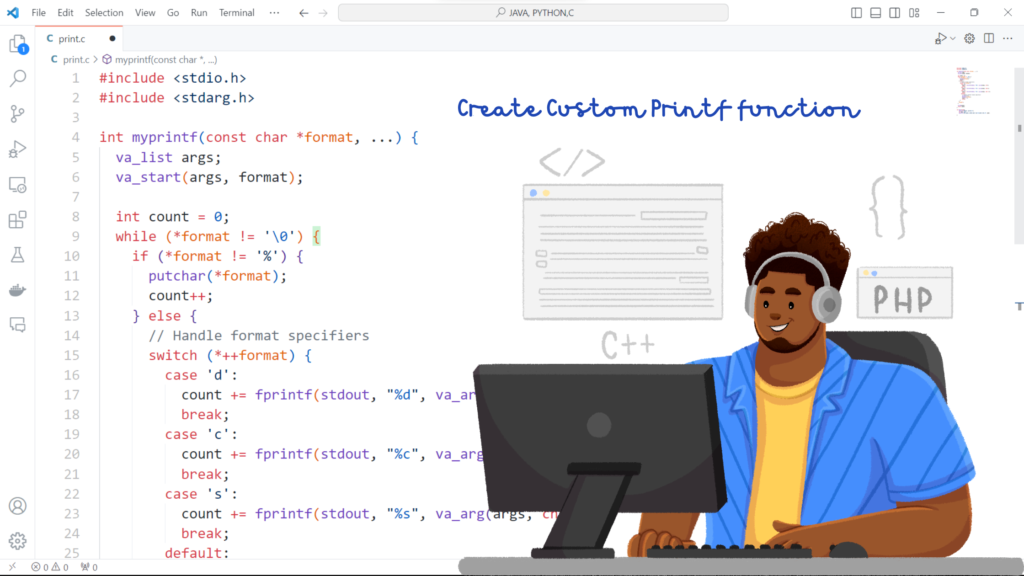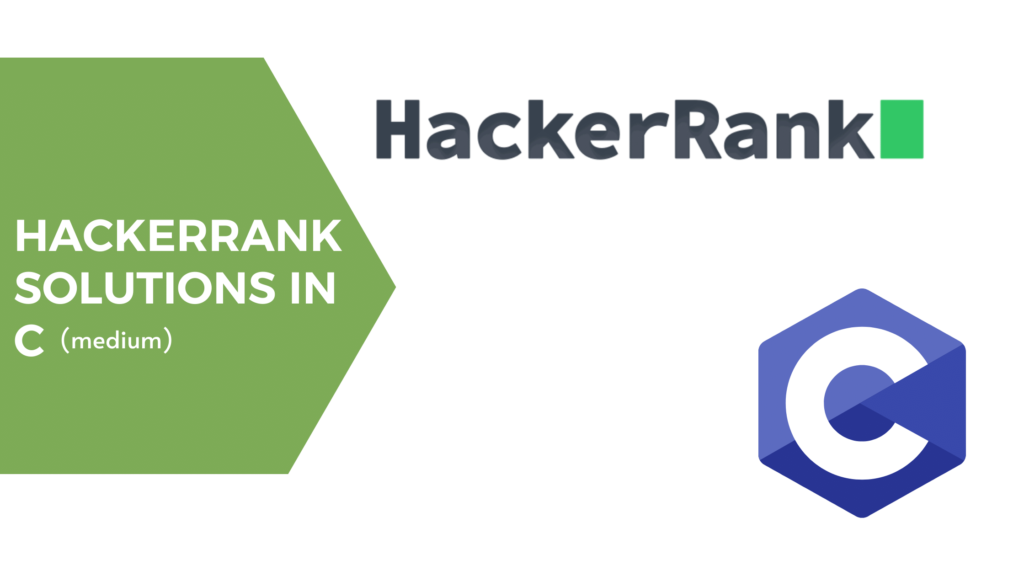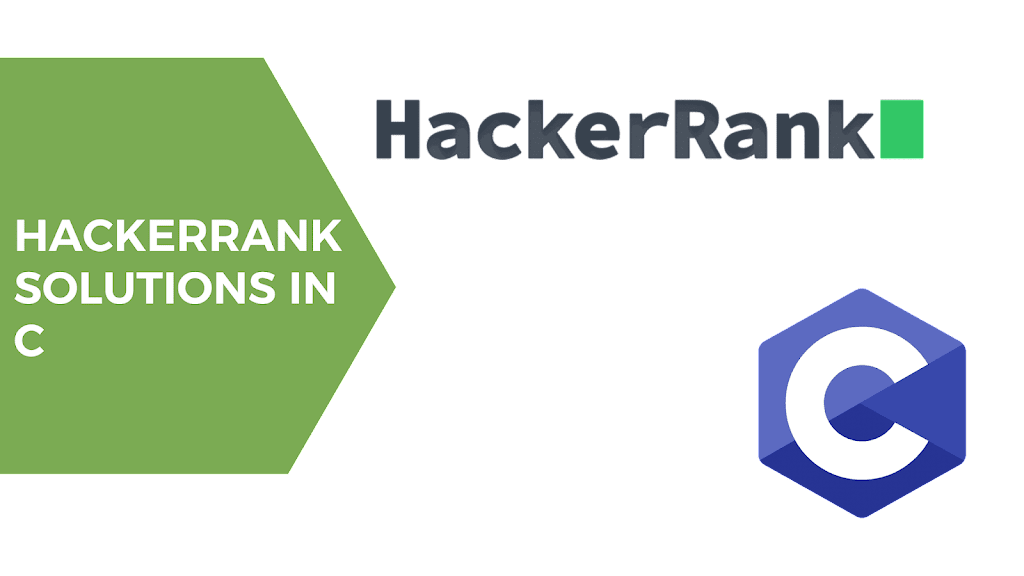Follow Us:
10 reasons why you should learn C in 2023

It is difficult to predict the exact state of C in 2023. However, based on its current popularity and widespread use in a variety of applications, it is likely that C will continue to be a widely-used and important language in the coming years.
C has a long history and has been used for a wide range of applications, from low-level system software to high-performance applications. Its versatility and efficiency make it a popular choice for many developers, and it is likely that this will continue to be the case in the future.
Additionally, the C language is constantly evolving, with new versions and updates being released regularly. It is likely that in 2023, C will continue to be improved and enhanced, with new features and capabilities added to make it even more powerful and useful for developers.
C is one of the oldest and most popularly used languages in the world, and its popularity shows no sign of waning in the year 2023. Here are 10 compelling reasons why you should learn and master the language of C in the year 2023.
What is C?
C is a general-purpose, procedural, imperative computer programming language developed in 1972 by Dennis Ritchie at the Bell Telephone Laboratories to develop the UNIX operating system. It was originally designed to provide low-level access to computer hardware and to serve as a portable assembly language.
Some of the key characteristics of the C programming language include:
- It is a compiled language, which means that the source code is converted into machine code that can be executed directly by the computer’s central processing unit (CPU).
- It is a high-level language, which means that it provides a level of abstraction from the details of the computer’s hardware and allows the programmer to focus on the logic of the program.
- It is a procedural language, which means that it provides a set of instructions that the computer can execute in a specific order.
- It is an imperative language, which means that it allows the programmer to specify how the program should execute, as well as the order in which the instructions should be executed.
- It is a statically-typed language, which means that the type of a variable (such as an integer or a floating-point number) must be specified at the time the variable is declared, and cannot be changed during the execution of the program.
C has been widely used in the development of operating systems, as well as in applications where efficiency and performance are critical. It is often used as the language of choice for systems programming, as well as in the development of low-level libraries and applications, such as device drivers, compilers, and interpreters.
C is a versatile language that you can use for a wide range of programming tasks, from system programming to embedded systems programming to application development. C++, which is an extension of C, is also a prevalent programming language.
Let’s see an example of ‘C’.
#include <stdio.h>
int main()
{
int a = 12;
printf("%d",a);
return 0;
}So what will this code show us?
This code will print the value of ‘a‘ as 12.
Now let’s see why you should learn this language first.
Why you should learn C in 2023?
Ok, so now let’s see what are the reasons why you should learn C in 2023. But before starting this I want to tell you that all of these data are not made by me, I’ve learned about this from several websites and books and only then do I create these points.

C is a highly efficient language that is well-suited to writing low-level code, such as system drivers and operating system kernels. It is also a relatively simple language, which makes it easy to learn and use. In addition, C has a rich set of features that allow programmers to create complex and powerful programs. Some of the benefits of using C include:
1. Efficiency:
C is a highly efficient language that is well-suited to writing low-level code, such as system drivers and operating system kernels. It is also a relatively simple language, which makes it easy to learn and use.
Flexibility: C provides a rich set of features that allow programmers to create complex and powerful programs. These features include pointers, which allow for efficient memory management, and support for low-level operations such as bit manipulation.
3. Structured Language:
‘C’ is a structured programming language with various modules. We can write each module separately and then combine them to make a single ‘C’ program. This structure makes the ‘C’ language easy to maintain and debug.
4. Range of use:
C is a general-purpose programming language that is widely used for developing applications that run on a variety of platforms, including Windows, Linux, Unix, and macOS. It is commonly used for developing low-level system software, such as operating systems, device drivers, and embedded systems, as well as high-performance applications, such as video games and graphics-intensive programs. C is also often used for developing scientific and engineering software, as well as for data analysis and machine learning applications. In general, C can be used for a wide range of applications, from simple scripting tasks to complex software development projects.
Databases:
The world’s most popular databases, like Oracle Database, MySQL, and MS SQL SERVER are coded with ‘C’ language( and also with C++). Many common consumer devices like microwave ovens, washing machines and digital cameras are getting smarter day by day. This smartness is coming from a microprocessor, an operating system and a program embedded in these devices. This program is mainly written in the ‘C’ language.
5. Difficulty:
‘C’ language is not too difficult but easy to learn and use. It has only 32 keywords, various data types and powerful built-in functions that make programming very efficient. But as it is a low-level and basic programming language, it doesn’t have advantages like Python and Java etc. But if you know the ‘C’ language, then other high-level languages like Python will become easier for you.
6. Extensibility:
Another thing is ‘C’ language can extend itself. C can be extended through the use of libraries, which provide additional functionality and allow programmers to reuse code. Basically, the ‘C’ language has a wide range of functions in the library and you can add your function and feature in the library. Not only that but you can also use those functions anytime you want in your program.
7. Community:
C has a large and active community of developers who contribute to its development and support its continued growth. This community provides valuable resources, such as libraries, tools, and documentation, which can help programmers to be more productive.
8. Portability:
C programs can be easily ported to different platforms and architectures, making it a good choice for developing cross-platform applications.
9. Code size:
The size of the code written in different programming languages can vary depending on a number of factors, including the complexity of the program, the programming style used, and the specific features and capabilities of the language.
In general, C is known for producing compact and efficient code, compared to some other languages. This is because C is a low-level language that provides the programmer with a high degree of control over the underlying hardware, which allows for the creation of efficient and optimized code. Additionally, C does not have many built-in features or libraries, which means that the programmer must write more code to implement the same functionality, compared to languages with more features and libraries built-in.
However, the size of the code written in C can also be influenced by the programming style used. For example, a program written in C that uses a functional programming style may be smaller in size than a program written in another language that uses an object-oriented programming style. Additionally, the use of third-party libraries and tools can also affect the size of the code written in C.
10. Popularity:
‘C’ language is the 4th most popular language in the world. The 1st and 2nd languages are Python and C++.
Limitations of C language
Although C is a powerful language, it does have some limitations. One of the main limitations of C is that it is not suitable for developing applications that require a lot of user interaction. C does not have a graphical user interface, which can make it difficult to develop user-friendly applications. Additionally, C does not have built-in graphics and multimedia capabilities, which can make it difficult to develop multimedia applications.
Some of the limitations of C include:
- No support for object-oriented programming: C does not support many of the features that are commonly associated with object-oriented languages, such as classes, inheritance, and polymorphism. This means that you cannot use C to write programs that use these features, which can make it more difficult to develop large and complex programs.
- Limited support for error handling: C provides only limited support for error handling, which can make it difficult to write programs that are robust and can handle unexpected inputs or errors.
- No support for garbage collection: C does not have a built-in garbage collector, which means that it is up to the programmer to manage memory and free up any unused memory. This can lead to memory leaks and other issues if the programmer does not carefully manage memory usage.
- No support for concurrency: C does not have built-in support for concurrency, which means that it is up to the programmer to write their own code to manage multiple threads of execution. This can be difficult and error-prone, and it can make it challenging to write programs that can take advantage of modern multi-core processors.
Conclusion:
So, after giving all these 10 points we can say that it doesn’t matter whether the language is too old or not as easy as Python, but the important thing is-
This is the basic language and if you want to strengthen your base on coding and want to be a good programmer, then you should learn the ‘C’ language first and after that, you should migrate/upgrade yourself to other high-level languages. This will not only help you to upgrade your programming skills but also you will learn other languages very easily.
So, that is it. If I missed anything please let me know by giving your comments.
Also Read:
I’d recommend you read a great article: resources for learning the C and C++ programming languages. As mentioned, it is a list of resources that includes tutorials, books, online courses, and other resources that can be used to learn these languages. The article also provides tips and advice for choosing the right resources and making the most of them while learning C and C++. Overall, the article is a useful guide for anyone interested in learning these languages.
If you want to know more about C++ then I have got another great article for you.
C++ for Kids (Beginners 8+) | Juni Learning: This article is about using the C++ programming language to teach kids to code. The article discusses the benefits of teaching C++ to kids, including its versatility and the fact that it is widely used in industry. The article also provides a list of resources and tips for teaching C++ to kids, including using fun and engaging projects to motivate them and providing plenty of support and guidance along the way. Overall, the article suggests that C++ can be a great language for kids to learn, and provides some useful advice for teaching it to them.
Important Books:
The best book for learning the ‘C’ language is-
- Let Us C by Yashwant Kanetkar
- Head First C: A Brain-Friendly Guide
- C Programming Language – This book is written by Dennis Ritchie, the inventor of the ‘C’ language.
Thank you.



